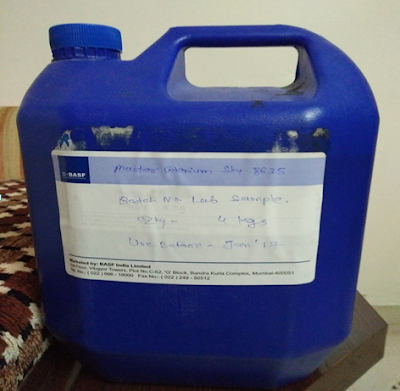Super plasticizer (SP) & VMA (viscosity modifying agent)
Super plasticizer (SP)
High-range water reducer, also
known as super plasticizer, has made a breakthrough in concrete industry. It is
an essential material component that must be used to produce SCC. The HRWRs
improve the flowing ability of SCC by their liquefying and dispersing actions.
They reduce the yield stress and plastic viscosity of concrete by their liquefying
action and thus provide a good flowing ability in SCC. In addition, the HRWRs
deflocculated the cement particles and free the trapped water by their
dispersing action, and hence enhance the flowing ability of SCC. In dispersing
action, the inter-particle friction and thus the flow resistance are also
decreased, and therefore the flowing ability of concrete is improved.
High-range
water reducers can either increase the strength by lowering the quantity of
mixing water for a given flowing ability, or reduce both cement and water
contents to achieve a given strength and flowing ability. They contribute to
achieve denser packing and lower porosity in concrete by increasing the flowing
ability and improving the hydration through greater dispersion of the cement
particles, and thus assist in producing high strength and good durability
VMA (viscosity modifying agent)
Viscosity-modifying admixture
is relatively a new addition to the family of admixtures for cement paste,
mortar and concrete. The common application of VEA is to produce
non-dispersible underwater concrete and SCC. VMA improves the viscosity and
cohesion of fresh concrete, and thus reduces the bleeding, surface settlement
and aggregate sedimentation resulting in a more stable and uniform fresh
concrete. In addition, VMA makes the fresh concrete more robust and less
sensitive to the small variations in the conditions and proportions of other
constituent materials.
Rixom and Mailvaganam (1999)
have categorized the VMAs into five classes based on their physical actions in
concrete. The classification is as follows:
Class A: Water-soluble
synthetic and natural organic polymers, which increase the viscosity of
concrete by increasing the viscosity of mixing water.
Class B:
Organic water-soluble flocculants, which increase the viscosity of concrete by
enhancing interparticle attraction between cement particles
Class C: Emulsions of various
organic materials, which improve the viscosity of concrete by increasing
interparticle attraction and supplying additional superfine particles in the
cement paste.
Class D: Water-swellable
inorganic materials of high surface area that improve the viscosity of concrete
by increasing the water-retaining capacity of the concrete.
Class E: Inorganic materials of
high surface area that improve the viscosity of concrete by increasing the
content of fine particles in concrete, and thereby resulting in greater
viscosity.
Most widely
used VEAs for concrete are of Class A. The VEAs under this class can be further
subdivided into natural, semi-synthetic and synthetic polymers.




Comments
Post a Comment